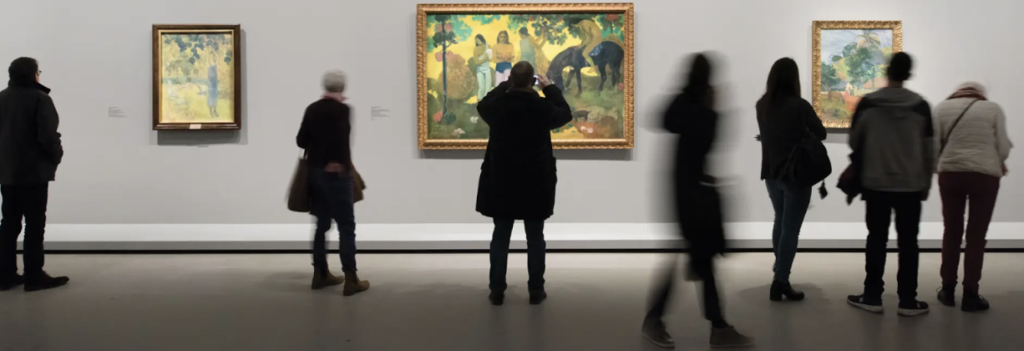What is Art?

Image Courtesy of The Art Newspaper
By Katherine Plunkett
This is an independently submitted op-ed for our Quill section. Views and statements made in this article do not necessarily reflect the opinions of The Tower.
On a trip to the Phillips Collection, the oldest modern art museum in America, found in Dupont Circle, I was approached by a man in one of the galleries and asked, “Does this even mean anything to you?” We were standing in a room full of medium-sized canvases, all painted a solid, glossy color, and I know he was expecting an agreement and a joint commiseration as to how we could have made those paintings ourselves and were they even art at all. But they did mean something, belonging to the movement of Conceptual Art: having just studied the movement, they might not have meant something to me personally, but I knew they meant something to the artist.
The Oxford English Dictionary defines art as “the expression or application of creative skill and imagination, typically in a visual form such as painting, drawing, or sculpture, producing works to be appreciated primarily for their beauty or emotional power.” But this definition does not answer the persistent question of “what is art?” It only begins to touch on something much larger, and limits our perspective, neglecting the artistry of other genres, such as music and writing.
Art is many things, one of them being personal. You cannot separate the art from the artist – art is created from the artist’s ideas, philosophies, and emotions. Painter Jackson Pollock said, “Painting is self-discovery. Every good artist paints what he is.” This is one of our favorite aspects as viewers of art. The pieces that resonate with us are often those that reveal something personal about the artists that we, too, understand and see ourselves in. My favorite poems are those I feel like I could have written if I had the words. We like to see ourselves in others as a reminder that there is something universal about humanity, about the things we feel and experience.
The artist, as a human, cannot escape making art that says something about humanity as a whole. Even the most abstract pieces are attempting to convey the human experience in a way that pushes our understanding beyond our usual ways of conceptualizing it. When arranged successfully by an abstract painter, there is still emotion in seemingly random shapes and lines. These pieces seem to tell us that our emotions, our humanity, is not always simple, not always able to be put into neat compositions and scenes, that sometimes there is something beyond.
Art is not just personal but also social. There is no shortage of social and political art. Art is used as propaganda, critique, and commentary. We study past cultures and societies through their artwork. Just as art cannot be separated from the person, it cannot be separated from society as well. It is not a mere reflection, though. The conventions and orders of society are not limits – art has the potential to change society. The most passionate artists are the ones who ask, “How can the world look different? Better?”
There is a teleological search for something greater at the heart of art. Through personal and social inspirations, all artists are looking for what it means to be human. In simple terms, art is human. This is why so many are unsettled by AI art – something is missing from it, something transcendent that can only be created from the soul. Even in the blank blue squares, belonging to the Conceptual Art movement that pushes the boundaries of human thought and how we conceptualize art are reaching for something beyond what we know about ourselves. There is still an attempt to learn something more about humanity.
So what is art? My answer would be that it is human and it is transcendent. All of it, even if you don’t like it, even if it doesn’t make you feel something, as long as it is searching for something greater through imagination and creativity, it is art. We like art when it is pleasing to the eye, but we are moved by it when it makes us feel, hope, dream, and believe in something, even if it is just ourselves but especially when it is something beyond us.





